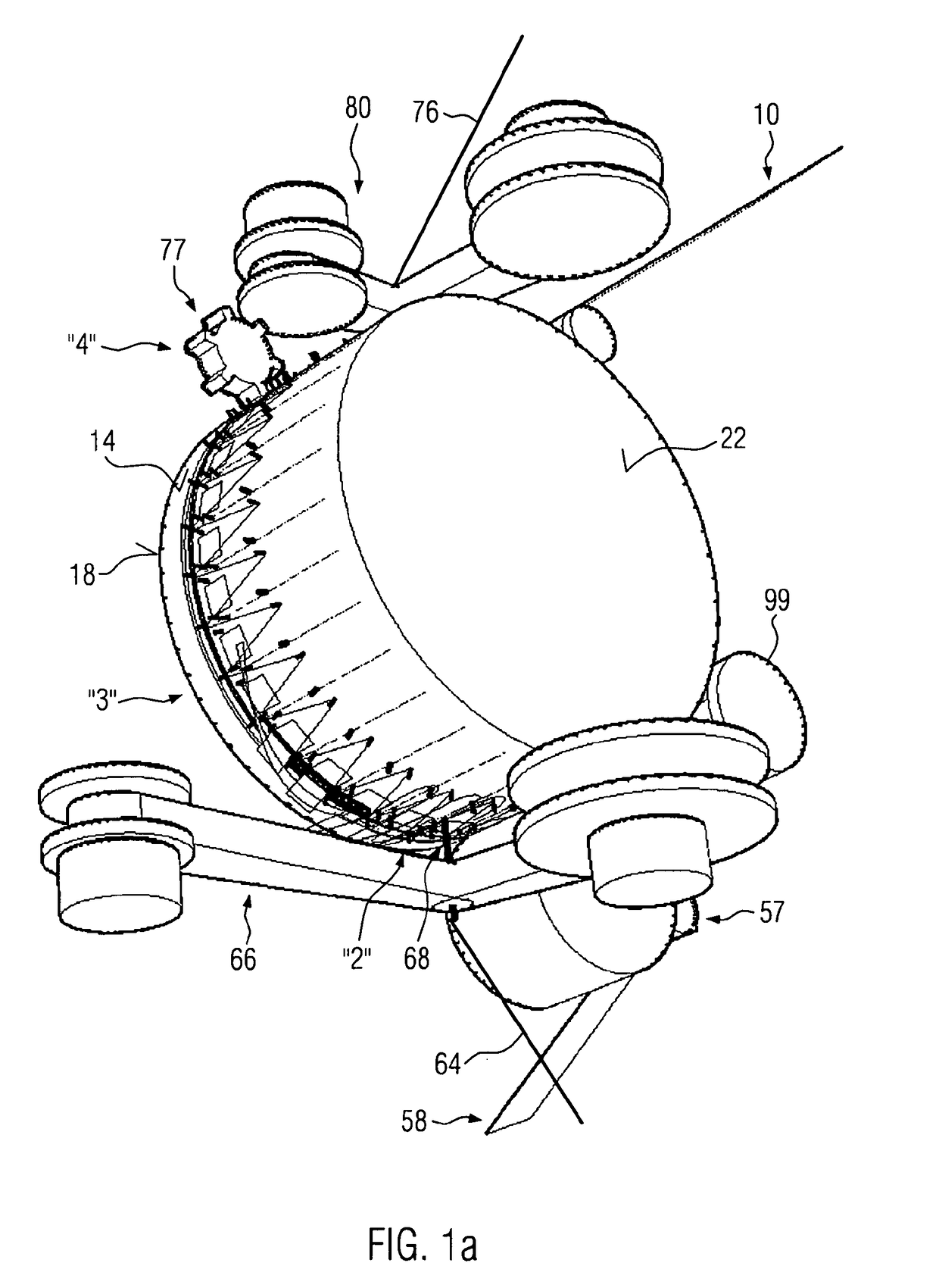Method for making pouches and a pouch as such
a technology of pouches and pouches, applied in the field of making pouches and pouches, can solve the problem of only restricting the penetration of water through the web material
- Summary
- Abstract
- Description
- Claims
- Application Information
AI Technical Summary
Benefits of technology
Problems solved by technology
Method used
Image
Examples
Embodiment Construction
[0041]FIG. 1 shows an embodiment of an apparatus suitable for conducting the inventive method. This apparatus comprises a web preparation module 2, a vertical sealer module 4, a folding module 6 arranged between the web preparation module 2 and the vertical sealer module 4 and a filler module 8 arranged behind the vertical sealer module 4 in the travelling direction of a web.
[0042]This web is fed to the web preparation module 2 as a continuous, unfolded web 10, the central part thereof being formed by a drum 12, which is rotatably driven in clockwise direction when viewed in accordance with the representation of FIG. 1. The flat projection of an outer circumferential surface 14 of the drum 12 as depicted in FIG. 2 to elucidate the essential steps of preparing the unfolded web 10 prior to folding in the folding module 6.
[0043]In FIG. 2, dotted lines identify various stations of pouches to be formed, which pouches are made by cutting a pouch train identified with reference numeral 16 ...
PUM
| Property | Measurement | Unit |
|---|---|---|
| angle | aaaaa | aaaaa |
| temperature | aaaaa | aaaaa |
| temperature | aaaaa | aaaaa |
Abstract
Description
Claims
Application Information
 Login to View More
Login to View More - R&D
- Intellectual Property
- Life Sciences
- Materials
- Tech Scout
- Unparalleled Data Quality
- Higher Quality Content
- 60% Fewer Hallucinations
Browse by: Latest US Patents, China's latest patents, Technical Efficacy Thesaurus, Application Domain, Technology Topic, Popular Technical Reports.
© 2025 PatSnap. All rights reserved.Legal|Privacy policy|Modern Slavery Act Transparency Statement|Sitemap|About US| Contact US: help@patsnap.com



